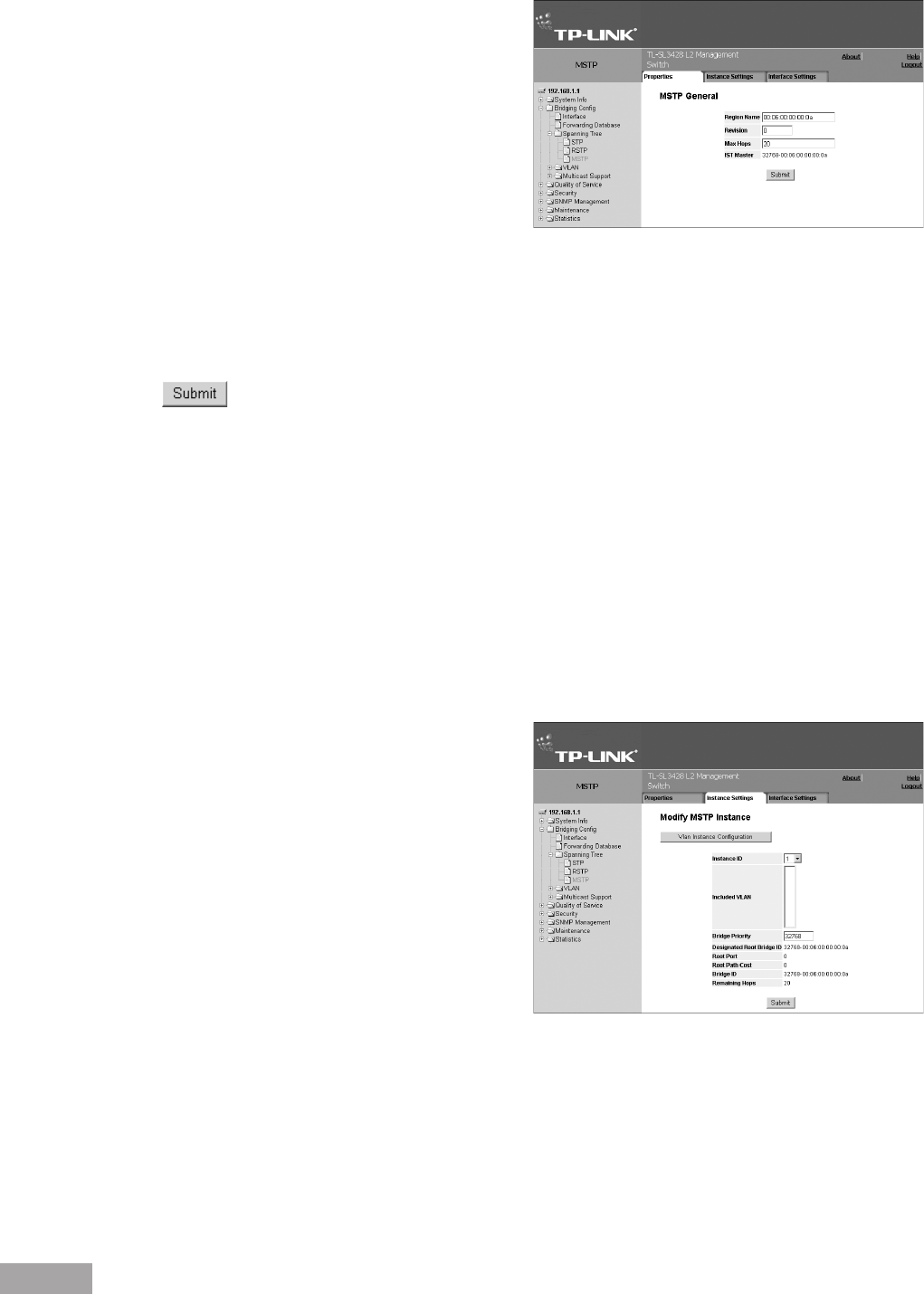
62
63
Figure 89: MSTP Properties Page
The MSTP Properties Page contains the following elds:
Region Name — Indicates the name of the user-
dened STP region.
Revision — Indicates that an unsigned 16-bit number
that identifies the revision of the current MSTP
conguration. The revision number is required as part
of the MSTP conguration.
The possible range is 0-65535.
Max Hops — Species the total number of hops that occur in a specic region before the BPDU is discarded. Once the
BPDU is discarded, the port information is aged out. The possible eld range is 1-40. The default value is 20 hops.
IST Master — Identies the Spanning Tree Master instance. The IST Master is the specied instance root.
2. Dene the Region Name, Revision and Max Hops elds.
3. Click . The device information is updated.
9.3.2 Conguring MSTP Instances
MSTP maps VLANs into STP instances. Packets assigned to various VLANs are transmitted along different paths within
Multiple Spanning Tree Regions (MST Regions). Regions are one or more Multiple Spanning Tree bridges by which frames
can be transmitted. In conguring MSTP, the MST region to which the device belongs is dened. A conguration consists of
the name, revision, and region to which the device belongs.
Network administrators can dene the MSTP instance settings using the MSTP Instance Settings Page.
To dene instance settings for MSTP:
1. Click System > Bridging Cong > Spanning Tree > MSTP > Instance Settings. The MSTP Instance Settings Page
opens:
Figure 90: MSTP Instance Settings Page
The MSTP Instance Settings Page page contains the
following elds:
Instance ID — Species the VLAN group to which the
interface is assigned.
Included VLAN — Maps the selected VLANs to
the selected instance. Each VLAN belongs to one
instance.
Bridge Priority — Specifies the selected spanning
tree instance device priority. The eld range is 0-61440
Designated Root Bridge ID — Indicates the ID of the
bridge with the lowest path cost to the instance ID.
Root Port — Indicates the selected instance’s root port.
Root Path Cost — Indicates the selected instance’s path cost.
Bridge ID — Indicates the bridge ID of the selected instance.
Remaining Hops — Indicates the number of hops remaining to the next destination.
2. Dene the elds.


















